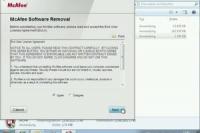The food pyramid explained in simple terms in biology
Food pyramids represent the course of life in a clear form. In biology, they are applied to ecosystems both in general and in a differentiated manner.

Function and structure of food pyramids
- A food pyramid represents in the biology the food chain of living things. The pyramid is divided into several horizontal levels, which are also called trophy levels.
- Each individual level comprises a link in the food chain of life. In the first place (lowest level) are the so-called primary producers.
- They include all living beings that use photosynthesis (including chemosynthesis) to produce their own biomass from inorganic substances. So the main representatives of this level are plants. In addition, there are many microorganisms that belong to this category, especially in the maritime area.
Further trophic levels in biology
- The second level of the food pyramid includes all types of herbivores, also called primary consumers. So you are the first in the food chain to build your own biomass from organic material.
- On the third level of the food pyramid, there are different types of carnivores that feed on the primary consumers. Accordingly, they are called secondary consumers.
- Depending on the ecosystem shown, additional levels of carnivores can be added. The Atlantic salmon feed on smaller fish and are eaten by other predators on their way to the spawning area.
- In biology, food pyramids usually represent the general course of the food chain of the ecosystem in a greatly simplified manner.
- For a more complex and differentiated presentation, you can fall back on so-called food webs, which also allow a stronger focus on individual species and mixed categories.
Material cycle in the forest explained step by step
The forest is subject to a material cycle, as there is no waste in nature, but ...
How helpful do you find this article?



